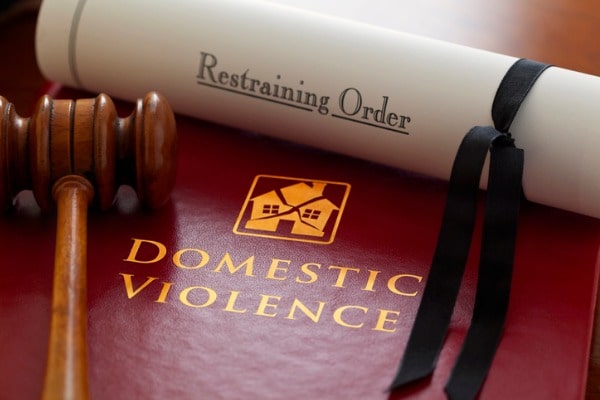
In State v. Yelovich, the WA Supreme Court held that a “Defense of Property” jury instruction is not available when there is a valid court order prohibiting the defendant from contacting the protected party.
BACKGROUND FACTS
Mr. Yelovich and Ms. De Armond dated for more than five years. At some point, and during all times relevant to this case, there was a valid no-contact order prohibiting Yelovich from contacting De Armond. The order forbids Yelovich from “coming near and from having any contact whatsoever, in person or through others, by phone, mail or any means, directly or indirectly” with De Armond. It also prohibited Yelovich from causing any physical harm or bodily injury to De Armond.
On the day in question, Yelovich parked his car in the driveway of his son’s house. He was moving boxes from the garage, and an approximately four-and-a-half-foot wood fence separated him and his car. After about an hour, Yelovich believed he saw someone through the fence, but he could not identify the person. When he went to his car, which had a broken passenger window, he saw that his cell phone and other personal belongings were missing. He saw De Armond walking down the street, and he testified at trial that he “knew then that she did it.”
Yelovich was aware that he was prohibited from contacting De Armond, but he thought the police would not arrive in time to recover his phone. Although he admitted it “was an irrational, radical move,” he chased after her in his car. When he found her a few blocks later, he got out of his car and attempted to take her purse because he believed she had put his phone in it. A struggle ensued, and De Armond testified that he was “bouncing her off the ground.” Her testimony was corroborated by a Good Samaritan who intervened. He testified that he “saw a man straddling a female. I saw him striking her,” and “he was lifting her up off the ground and slamming her on the ground.”
Both the fire department and police responded to the incident. De Armond was treated for minor injuries, including redness, bruising, and a small laceration. The responding police officer who interviewed De Armond noted she seemed intoxicated and “she had a really hard time keeping herself together.”
The State charged Yelovich with one count of felony violation of a no-contact order predicated on his assault of De Armond and one count of Bail Jumping. At trial, he argued that he was entitled to a jury instruction on defense of property because he was protecting his cell phone, which he believed De Armond had stolen.
For those who don’t know, a jury instruction is a guideline given by the judge to the jury about the law they will have to apply to the facts they have found to be true. The purpose of the instructions is to help the jury arrive at a verdict that follows the law of that jurisdiction. AT any rate, the judge refused, reasoning that Yelovich “was acting offensively, not defensively to protect property.”
The jury convicted Yelovich as charged. He appealed only his felony violation of the no-contact order on the basis that he was improperly denied a jury instruction. The Court of Appeals affirmed the trial court, and Yelovich appealed.
ISSUE
Whether the trial court improperly refuse to instruct the jury on the affirmative defense of defense of property.
COURT’S ANALYSIS & CONCLUSIONS
The SUpreme Court reasoned that under statute, Violation of a No-Contact Order is usually a gross misdemeanor, but it is elevated to a Class C felony if the restrained party assaults the protected party during the violation. Therefore, assault is an essential element of the crime of felony violation of a no-contact order, and the State must prove it occurred beyond a reasonable doubt.
Yelovich relies on Washington’s Self-Defense and Defense of Property Statute to claim that he may use defense of property as an affirmative defense. The statute states:
“The use, attempt, or offer to use force upon or toward the person of another is not unlawful . . . whenever used by a party about to be injured, or by another lawfully aiding him or her, in preventing or attempting to prevent an offense against his or her person, or a malicious trespass, or other malicious interference with real or personal property lawfully in his or her possession, in case the force is not more than is necessary.”
Yelovich argues the statute provides “a valid affirmative defense whenever assault is charged or whenever assault is an element of the charged crime,” and therefore it may be used when the charged crime is felony violation of a no-contact order. However, Yelovich’s position ignores the critical role of the underlying no-contact order in this case.
The Court further reasoned that the standard language included in the order warned Yelovich that as the restrained party, he has the sole responsibility to avoid or refrain from violating the order’s provisions.
“By the terms of the order, Yelovich has no power to engage in self-help if doing so brings him into contact with De Armond. This bright line rule ensures that victims are not left wondering whether conduct prohibited by the no-contact order might later be deemed lawful. It therefore furthers the legislature’s goal to provide victims of domestic violence the maximum protection from abuse.”
The Court concluded that, in sum, Yelovich had sole responsibility for not violating the terms of a valid court order that forbids him from contacting De Armond, and so he had no authority to chase De Armond when he believed she had taken his phone. Accordingly, Yelovich was not entitled to a jury instruction on defense of property because his conduct violated the court order.
My opinion? Although the statute is very clear that mutual violations of the order and Defense of Property is not a defense, other defenses do exist.
Please contact my office if you, a friend or family member face criminal charges for violating a no-contact order. Hiring an effective and competent defense attorney is the first and best step toward justice.







